Nội Dung Chính
(Page 108)
VII. COMMUNICATION AND CULTURE / CLIL
Everyday English
Expressing concern
1. Listen and complete the conversations with the expressions in the box. Then practise them in pairs. 🎧
A. Has something happened?
B. Is there something wrong?
C. Is there anything I can do to help?
D. Do you feel better now?
1.
Nam: Hi, Linda. Why didn't you come to Cuc Phuong National Park with us yesterday? We were worried about
you. (1) _____.
Linda: I had a stomachache, so I had to stay at home and rest.
Nam: Sorry to hear that. (2) _____.
Linda: I'm fine now. Thanks for asking.
2.
Mai: You look worried. (3) _____.
Nam: If you could look at my slides, it would be great. Thanks so much in advance, Mai.
2. Work in pairs. Use the models in 1 to make similar conversations for these situations. One of you is A, the other is B. Use the expressions on page 109 to help you.
1. A looks worried because he/she hasn't collected enough information about endangered species for his/her biology project. B expresses concern about him/her.
2. B didn't join a school field trip to the Endangered Species Rescue Centre. A expresses concern about him/her.
(Page 109)
| Useful expressions |
| Expressing concern |
| • Are you all right?/Are you OK? • What's the matter?/What's up? • How are things?/How are you getting on? • You look a bit tired. Are you feeling all right? • Is there anything I can do? • You look worried/upset. Has something happened?/Is there something wrong? |
CLIL
1. Read the following text. Put a tick (✔) if the animals in the table are classified as endangered and a cross (x) if they are not.
THE IUCN RED LIST
The International Union for Conservation of Nature (IUCN) Red List divides species into seven levels of conservation: Least Concern, Near Threatened, Vulnerable, Endangered, Critically Endangered, Extinct in the Wild, and Extinct. It uses a set of precise criteria to evaluate extinction risks and decides which species need protection. An endangered species is one that meets any of the following criteria:
Population reduction rate
A species is classified as endangered when its population has declined between 50 and 70 per cent. This decline is measured over 10 years or longer.
Geographic range
Geographic range describes the area where a species is found. If the area that a species lives on, known as its area of occupancy, is estimated to be less than 500 square kilometres, then the species is classified as endangered.
Population size
A species is classified as endangered when there are fewer than 2,500 mature individuals. When a species population declines by at least 20 per cent or two generations within five years, it is also classified as endangered.
| Animals | Endangered or not |
 | Siberian sturgeon - Rate of population decline: between 50 and 80 per cent over the past 60 years - Causes of decline: overfishing, poaching, and habitat loss | |
 | Ethiopian banana frog - Location: in southern Ethiopia - Area of occupancy: less than 2,000 square kilometres | |
 | Snaggletooth shark - Location: in the tropical, coastal waters of the Indian and Pacific Oceans - Area of occupancy: enormous, from southeast Africa to the Philippines and from China to Australia Tahiti reed-warbler | |
 | Tatihi reed-warbler - Location: only on the Pacific Island of Tahiti - Population: fewer than 1,000 individuals - Area of occupancy: around 420 square kilometres |
2. Work in groups. Name some endangered animals in Viet Nam. Share what you know about them.
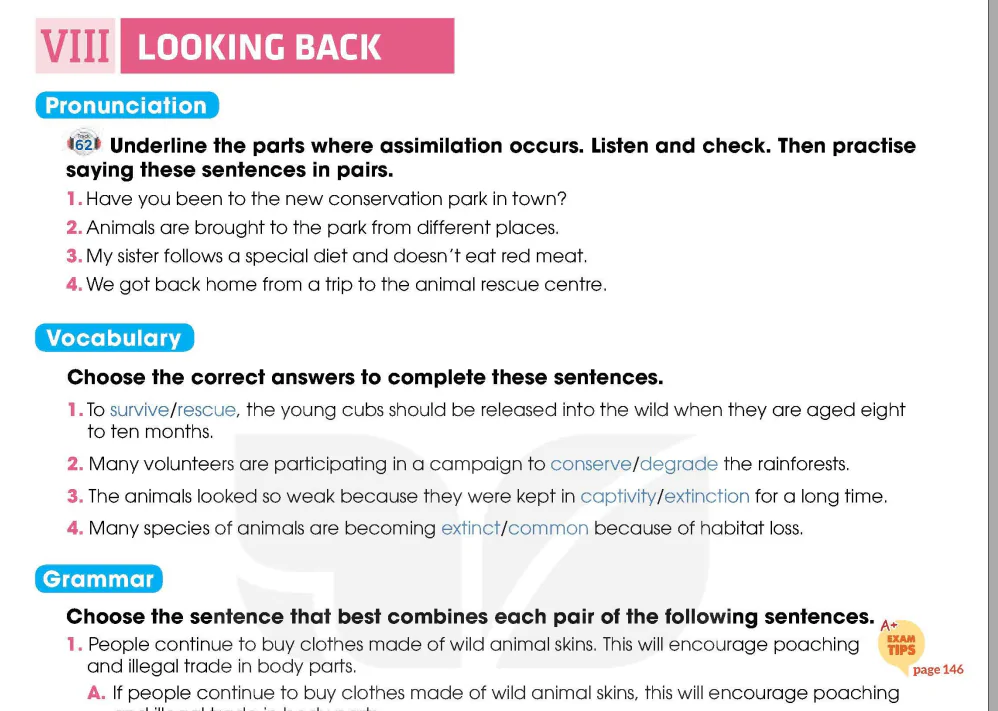
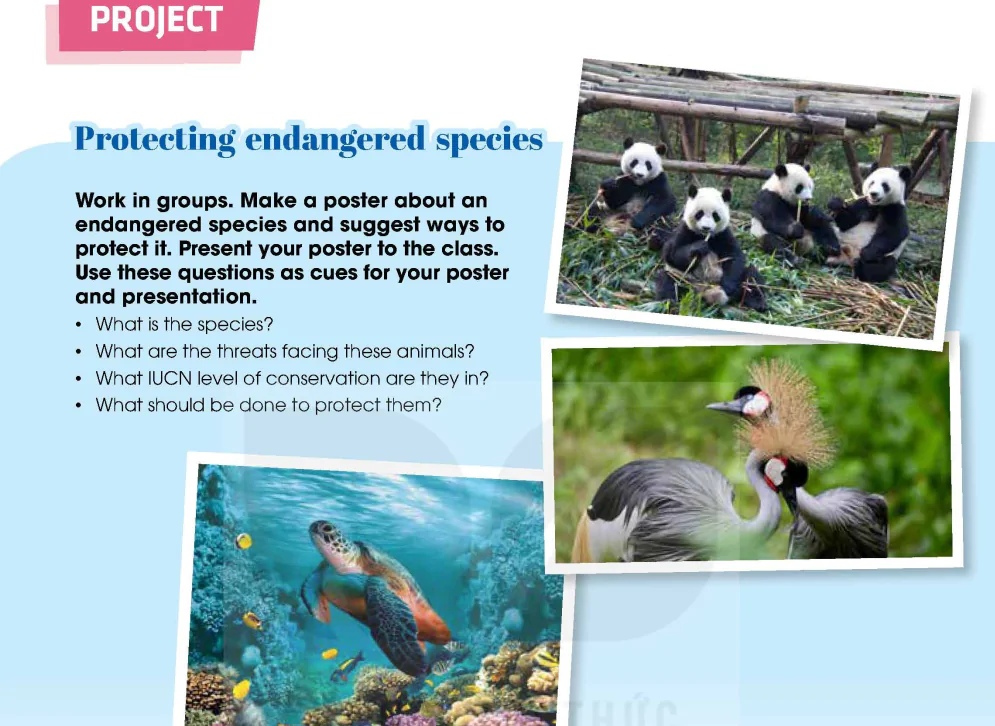
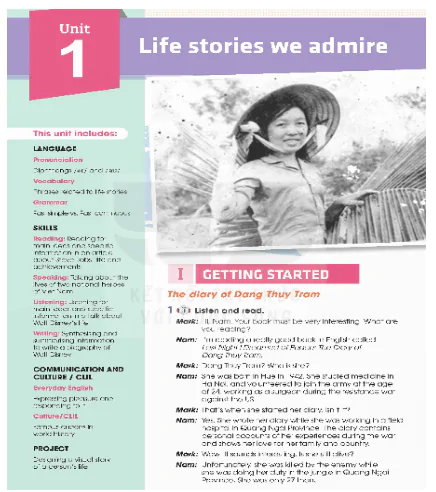
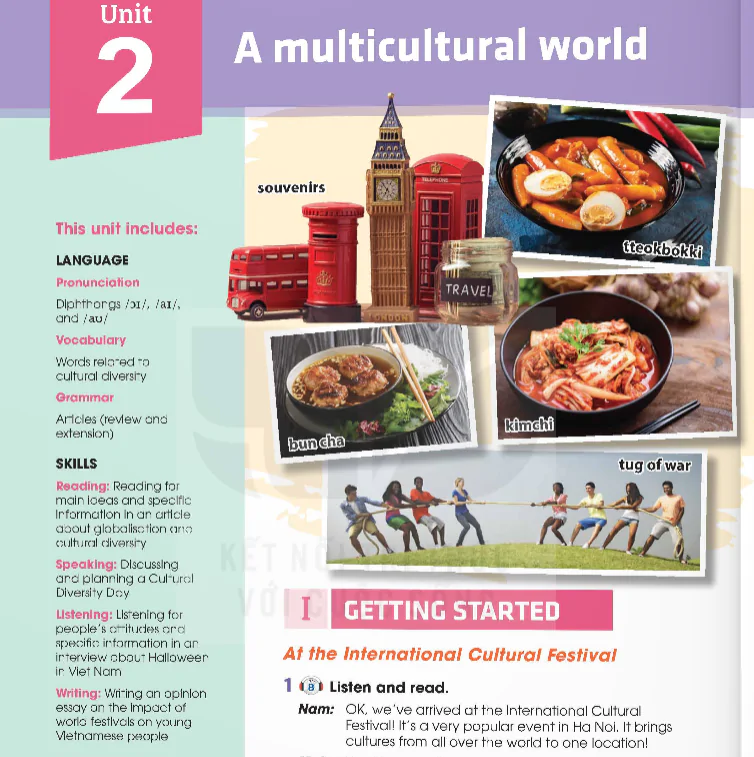
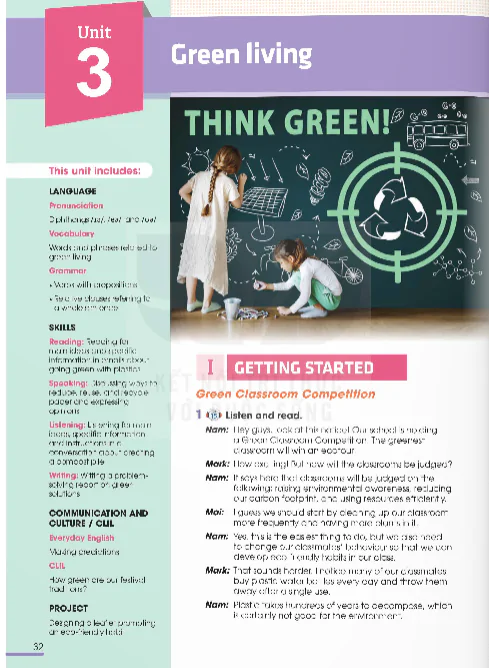
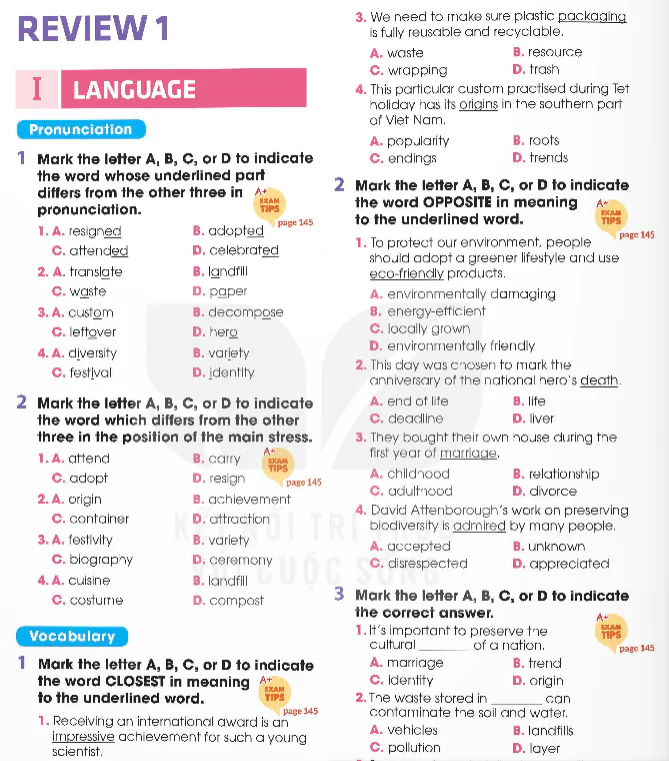
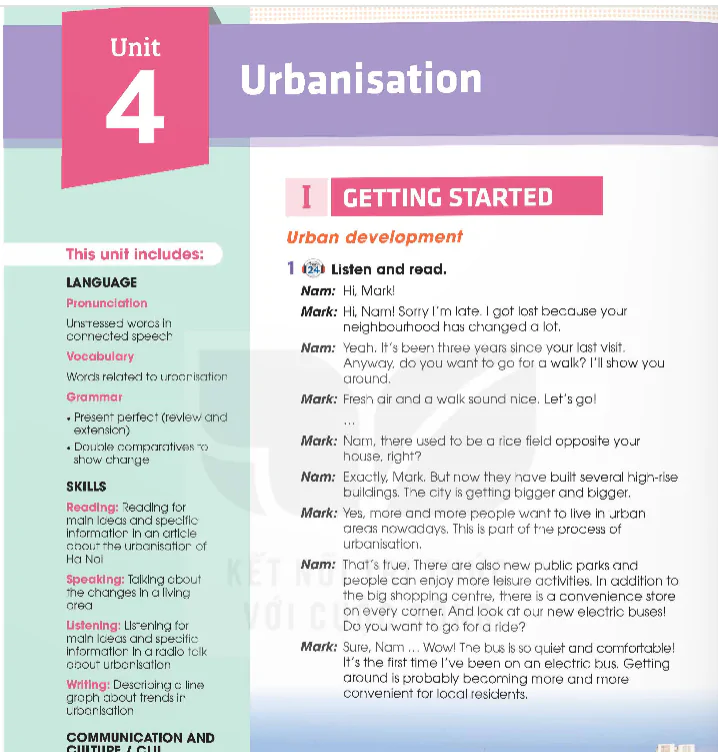

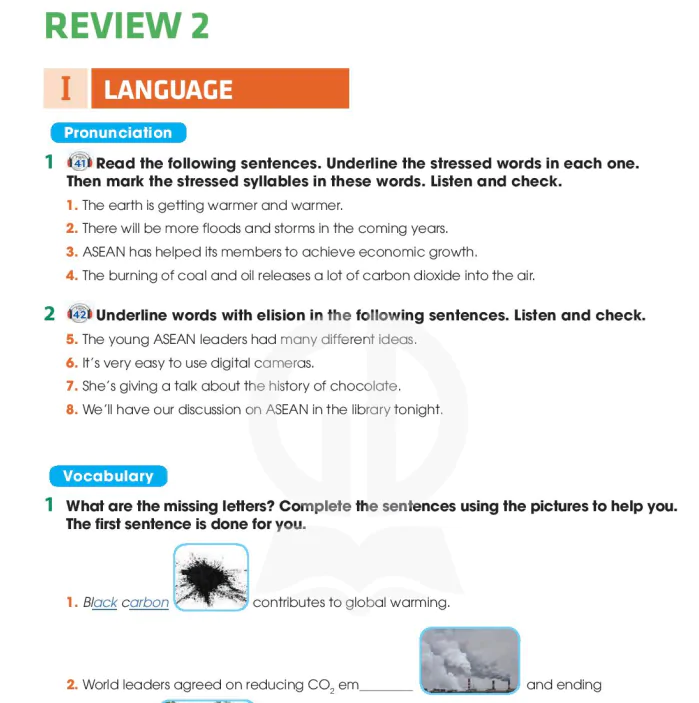


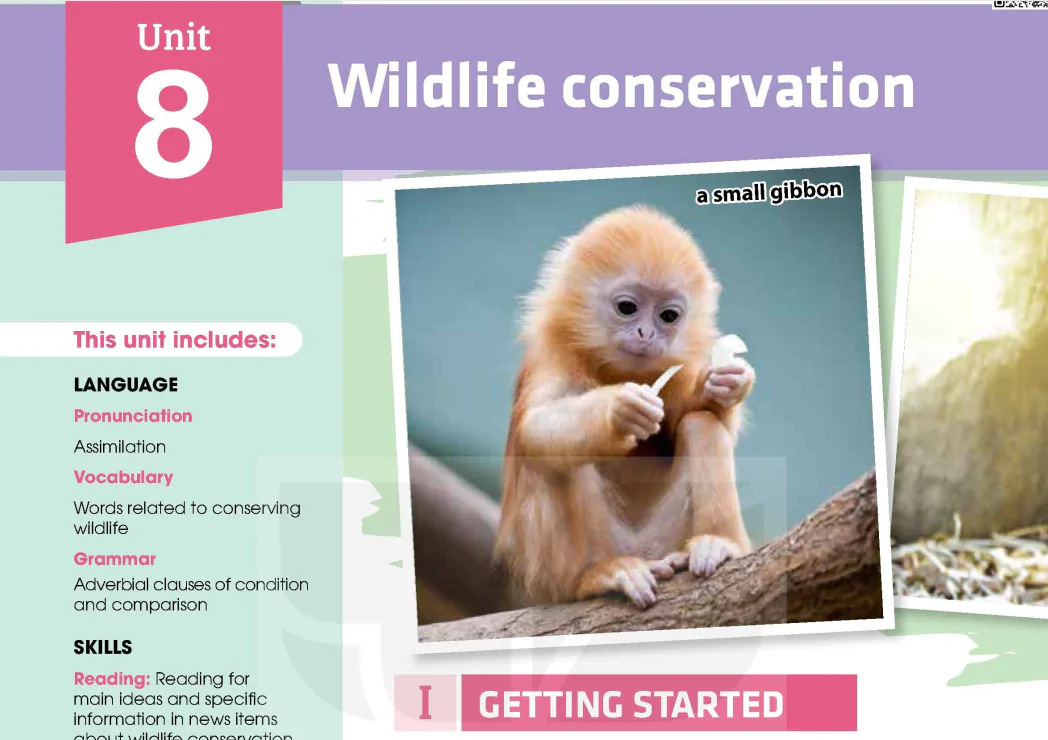
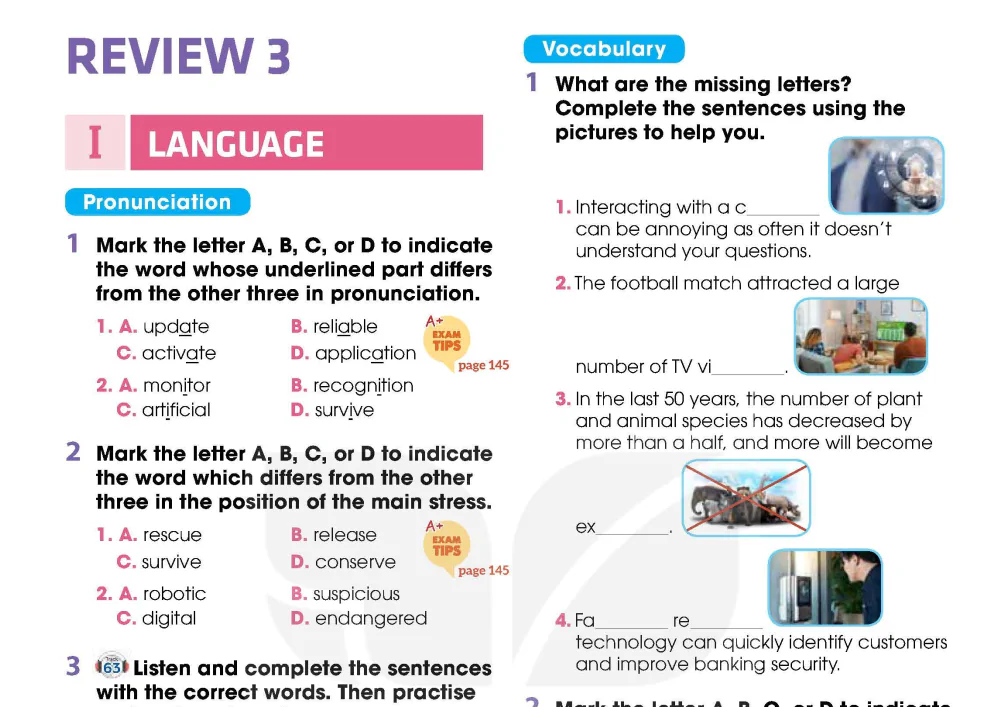

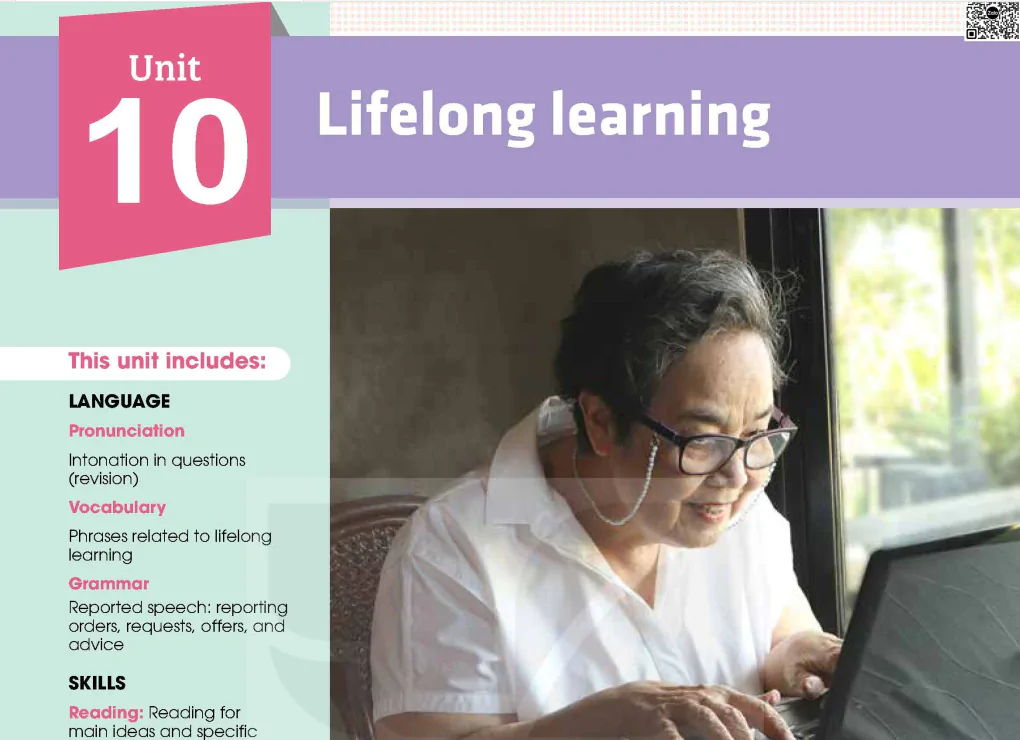
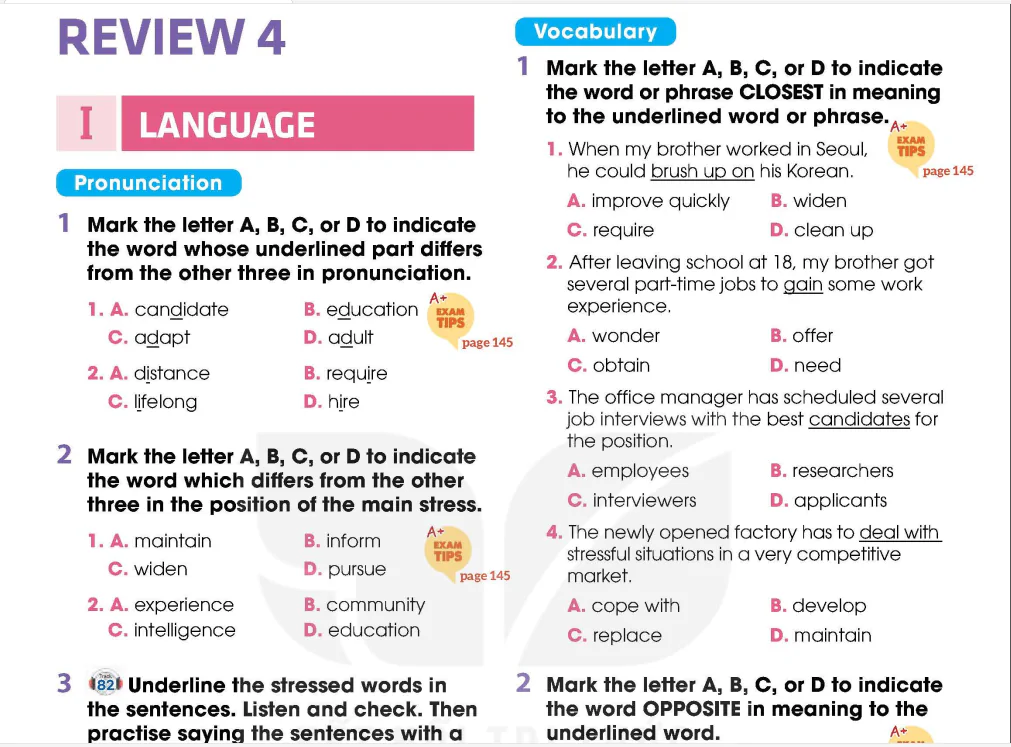
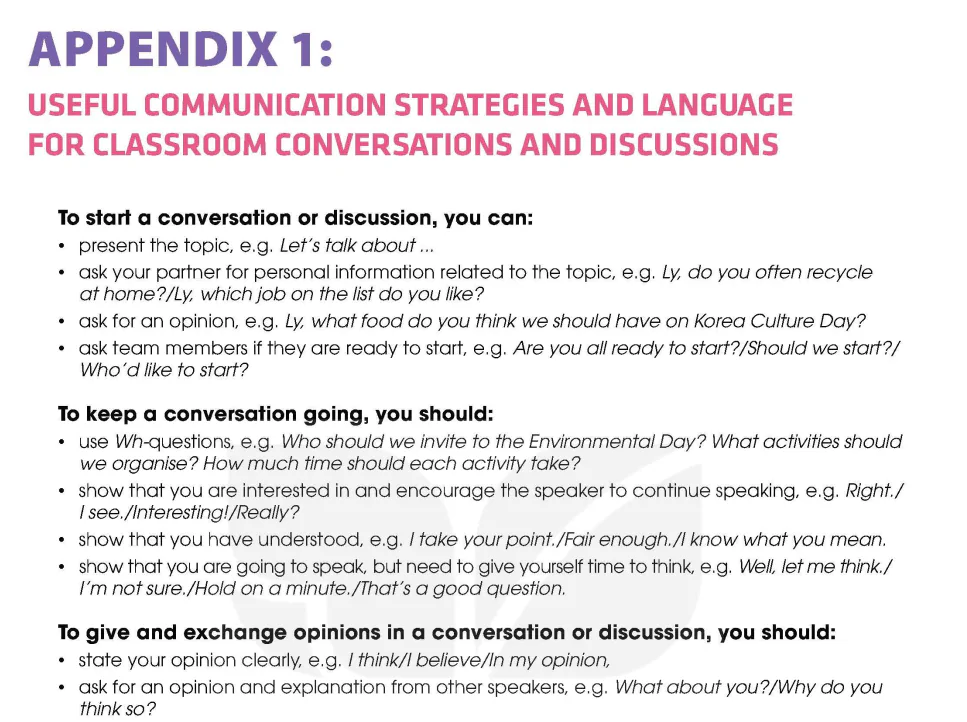
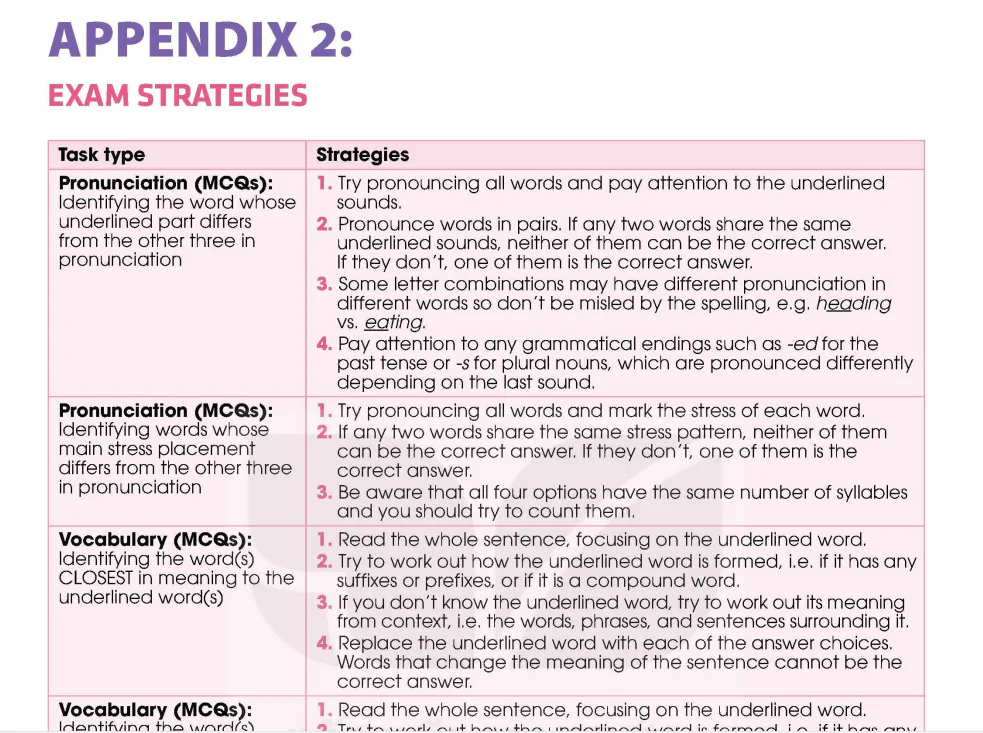
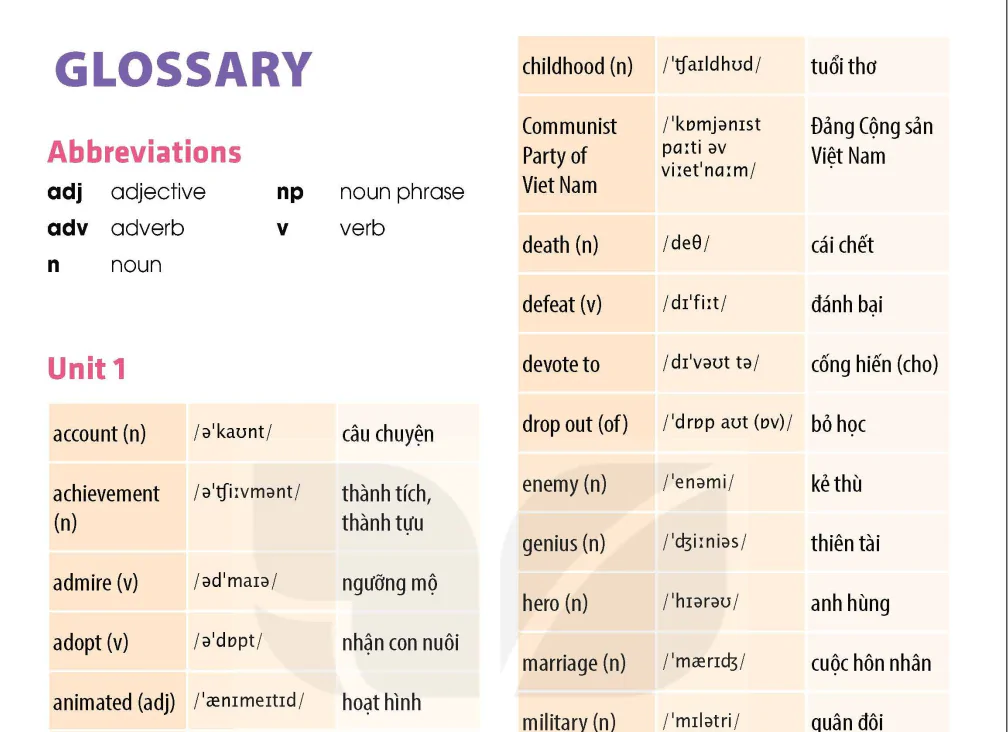


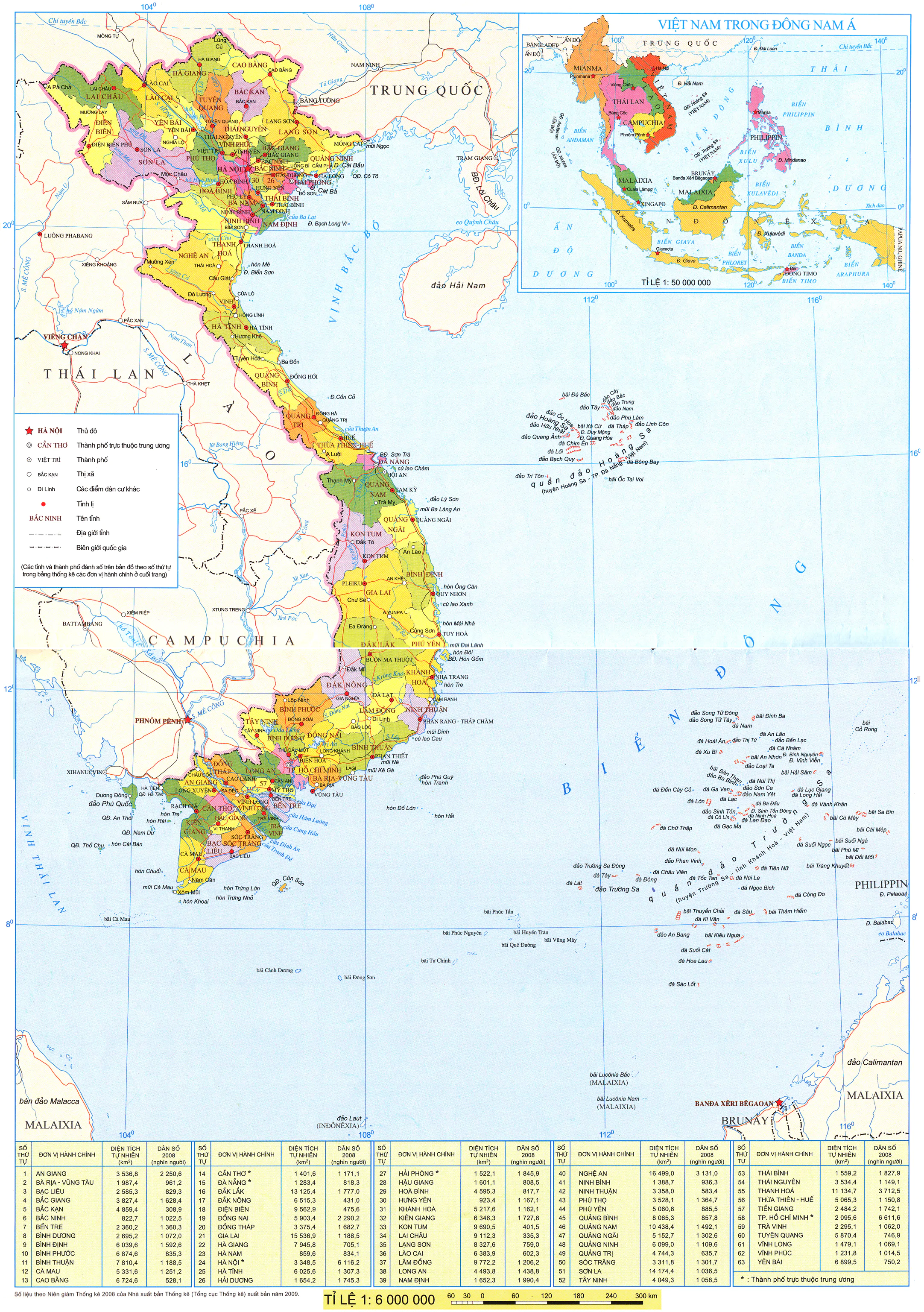
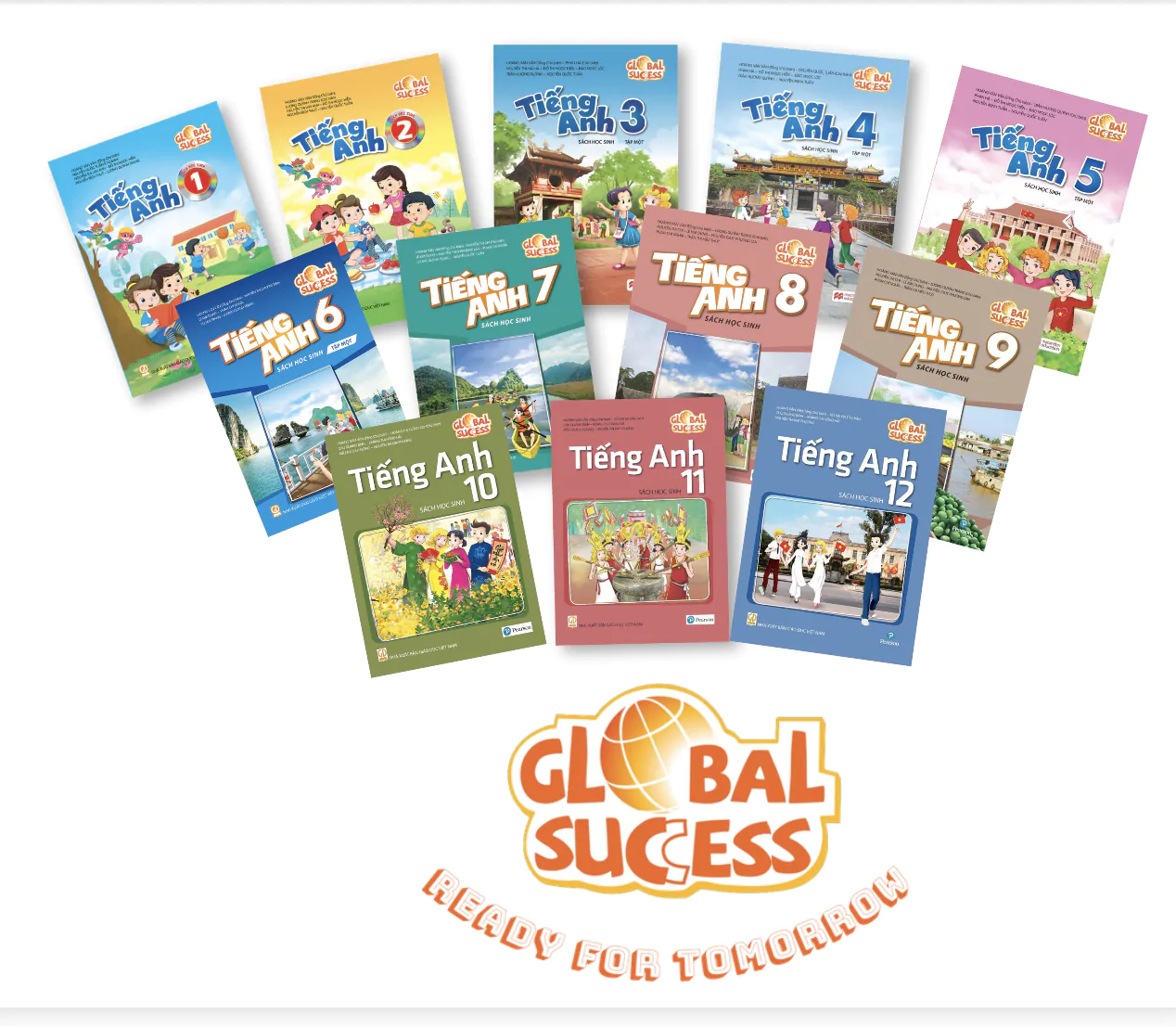














Bình Luận
Để Lại Bình Luận Của Bạn